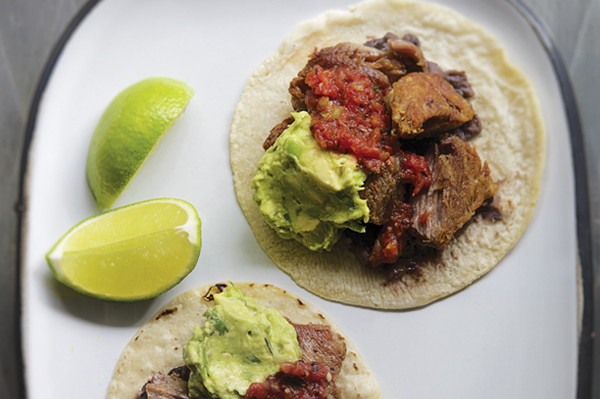Cooks Illustrated- very good 8/10
Why This Recipe Works
To replicate this traditional red beans and rice recipe from New Orleans using ingredients easily found in supermarkets across the country, we made some simple substitutions: small red beans for Camellia-brand dried red beans and bacon for hard-to-find tasso. Fine-tuning the proportions of sautéed green peppers, onions, and celery gave the recipe balance, and the right ratio of chicken broth to water added complexity without giving the dish an overpowering chicken flavor.
- Table salt
- 1 pound small red beans (about 2 cups), rinsed and picked over
4 slices bacon (about 4 ounces), chopped fine (see note) (I used 6oz turkey bacon)
1 medium onion, chopped fine (about 1 cup)
1 small green bell pepper, seeded and chopped fine (about 1/2 cup)
1 celery rib, chopped fine (about 1/2 cup)
3 medium garlic cloves, minced or pressed through garlic press (about 1 tablespoon)
1 teaspoon fresh thyme leaves
1 teaspoon sweet paprika (see note)
2 bay leaves
¼ teaspoon cayenne pepper - Ground black pepper
3 cups low-sodium chicken broth
6 cups water
8 ounces andouille sausage, halved lengthwise and cut into 1/4-inch slices (see note) (I used turkey andouille) - Basic White Rice (see related recipe)
1 teaspoon red wine vinegar, plus extra for seasoning
3 scallions, white and green parts, sliced thin - Hot sauce (optional)
Instructions
Serves 6 to 8
If you are pressed for time you can “quick-brine” your beans. In step 1, combine the salt, water, and beans in a large Dutch oven and bring to a boil over high heat. Remove the pot from the heat, cover, and let stand 1 hour. Drain and rinse the beans and proceed with the recipe. If you can’t find andouille sausage, substitute kielbasa. Tasso can be difficult to find, but if you use it, omit the bacon and paprika in step 2 and cook 4 ounces finely chopped tasso in 2 teaspoons vegetable oil until lightly browned, 4 to 6 minutes, then proceed with the recipe. In order for the starch from the beans to thicken the cooking liquid, it is important to maintain a vigorous simmer in step 2. The beans can be cooled, covered tightly, and refrigerated for up to 2 days. To reheat, add enough water to the beans to thin them slightly.
1. Dissolve 3 tablespoons salt in 4 quarts cold water in large bowl or container. Add beans and soak at room temperature for at least 8 hours and up to 24 hours. Drain and rinse well.
2. Heat bacon in large Dutch oven over medium heat, stirring occasionally, until browned and almost fully rendered, 5 to 8 minutes. Add onion, green pepper, and celery; cook, stirring frequently, until vegetables are softened, 6 to 7 minutes. Stir in garlic, thyme, paprika, bay leaves, cayenne pepper, and 1/4 teaspoon black pepper; cook until fragrant, about 30 seconds. Stir in beans, broth, and water; bring to boil over high heat. Reduce heat and vigorously simmer, stirring occasionally, until beans are just soft and liquid begins to thicken, 45 to 60 minutes.
3. Stir in sausage and 1 teaspoon red wine vinegar and cook until liquid is thick and beans are fully tender and creamy, about 30 minutes. Season to taste with salt, black pepper, and additional red wine vinegar. Serve over rice, sprinkling with scallions and passing hot sauce separately, if desired.
Keys to Better Red Beans
THE RIGHT BEANS
Small red beans cooked up creamier than kidney beans and were easier to find than the authentic Camellia beans.
OVERNIGHT BRINE
Salting the dried beans during their overnight rehydration session kept them well seasoned and smooth-textured.
ACID REDUX
Adding red wine vinegar at two different points during the cooking process provided all the bright acidity of traditional “pickle meat”




